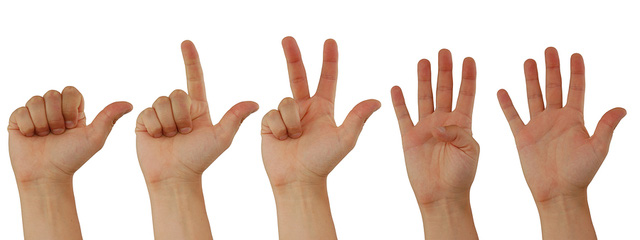Why do human hands have 5 fingers?
Mark Changizi, an American neuroscientist, has developed a simple mathematical formula to explain the amount of an organism, from insects to mammals, even aliens. The name is the law of chi (Limb Law) .
- Why do human thumbs only have 2 burns?
- Cases of superfluous body parts in the world
- 5 parts of new scientific world discovered in human body
Changizi's formula is based on the length of the limbs and body radius. The amount of the organism (N) is calculated as follows:
N≈2π / k.
- L is the length of the genus.
- R is the body radius.
- k is the chi ratio, k = L / (L + R).
With this formula, the shorter the length of the limbs, the more accurate the result.
Changizi tested the chi recipe with more than 190 species of organisms. The results show an amazing coincidence.
With some special cases such as snakes, the length is zero, we have k = 0 and N is infinite. Thus, the snake is considered to have countless limbs but the length of chi is zero.

At the number of fingers on the human hand is not 4 or 6 but 5.
For humans, we will apply the law of chi to the hand that explains why it has 5 fingers.
The human hand has the length of the finger approximately the diameter of the palm. This means that the length of the finger is twice the radius of the palm.
Apply to the formula we have:
L ≈ 2R
k ≈ L / [L + (L / 2)] = 2/3
=> N ≈ 2π / k ≈ 9.42
The hand is not a separate creature, it attaches to the arm on nearly half of its circumference and the fingers can only grow from the other half of the circumference. Therefore, the number of fingers on one hand is 9.42 / 2 = 4.71, rounded to 5 fingers.
You should read it
- Typing 10 fingers, practice typing with 10 fingers fastest
- Practice typing 10 fingers to speed up typing
- Causes and remedies of limb cold in winter
- Unique experiments with Gallium - special metals that can melt on human hands
- How to Use the Trackpad to Zoom on a Mac
- The first aid steps in time when the hand jammed into the door gap
 The width and path of radioactive clouds if North Korea tests the Pacific thermonuclear bomb
The width and path of radioactive clouds if North Korea tests the Pacific thermonuclear bomb If you lack human water, how long will you live?
If you lack human water, how long will you live? If struck by lightning when flying, is the bullet affected?
If struck by lightning when flying, is the bullet affected? It turned out that this was the reason that only one side of the nose was suffocated with the flu
It turned out that this was the reason that only one side of the nose was suffocated with the flu Why do people often choose white to paint airplanes rather than other colors?
Why do people often choose white to paint airplanes rather than other colors? Decode the strange phenomenon: the egg is nest in the egg
Decode the strange phenomenon: the egg is nest in the egg